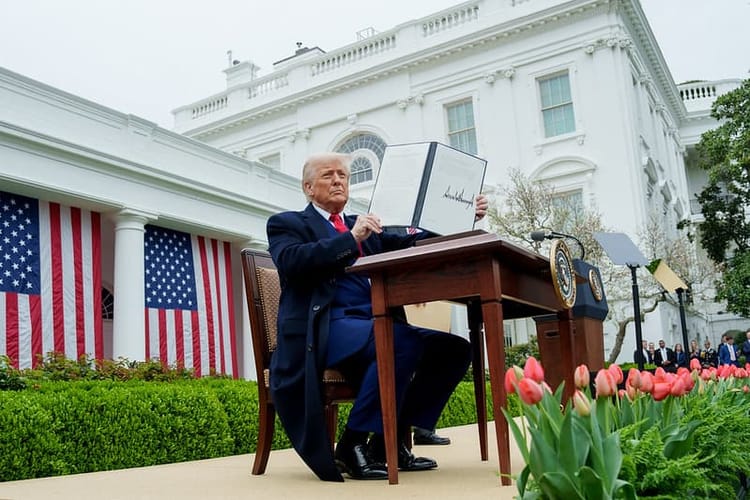Forthcoming "Made in China" and Five-Year Plans Chart Course Towards Continued US-China Friction

First announced in 2015, China's "Made in China 2025" (MIC2025) plan outlined its top-down strategy for decreasing its reliance on foreign technology and capturing dominant shares of global manufacturing in key sectors. Now, China is working on a new set of industrial plans for 2026-2030.
China analysts have assessed that, while China did not meet all of its MIC2025 goals, MIC2025 successfully orchestrated State and private capital to drive unprecedented manufacturing growth and enabled China to dominate strategic sectors such as electric vehicles, renewables, and drone technology.
Leaks from the planning process indicate that China will continue to focus on export-led growth and resist pressure from the US to transition towards a consumption-led economy or reduce bilateral trade deficits. The new plans are expected to be unveiled in March 2026.
Outlook
- China's is likely to maintain and expand upon policies and practices that generated tensions with the US over the past two decades, while also shoring up vulnerabilities exposed by US tariffs and export controls.
- China's decision to double down on its prior economic growth strategies amount to a rebuke of US demands for reform and suggest that ongoing trade negotiations with the US will not reach a durable and lasting resolution that addresses root causes of the dispute.
- China's developmental course suggests that both US-China tensions and economic decoupling will continue and broaden in scope.
Other Impacts
- Companies waiting for policy certainty before making major supply chain changes may find long waiting lists at alternative suppliers if negotiations fail to produce a favorable outcome or if a negotiated resolution falls apart.
- Since January, China has discovered that weaponizing its advantages in rare earth metals and critical minerals produced excellent results at the negotiating table. Companies that are dependent on these resources face continued disruption should tensions flare again.
Analysis
MIC2025 was not efficient, but it was effective
According to the MIC2025 Green Book,
MIC2025 was designed to change that. It continues:
MIC2025 specifically targeted a variety of emerging technology and strategic manufacturing sectors for growth:
- Information technology
- Semiconductor research, design and manufacturing
- Smart manufacturing
- High-end CNC tools
- Robotics
- Aerospace and aviation equipment
- Marine technology and shipbuilding
- Advanced rail technologies and rail transportation equipment
- New energy vehicles and intelligent connected vehicles
- Renewable energy and power generation
- New materials
- Biotechnology, biomedicine, new pharmaceuticals, and new medical devices
- Agricultural machinery and equipment
It used a variety of policy interventions to strengthen domestic firms, including state-guided investment funds; directed non-market bank loans, tax incentives, land benefits and grants; financial support to Chinese companies in acquiring foreign technology, expertise and companies; and restricting market access for foreign firms to protect local players (a practice known as "import substitution").
Chinese sub-national government bodies, banks and state-owned enterprises swiftly acted on MIC2025 and other government industrial policy directives. According to Rhodium Group:
- Average government grants to targeted Chinese companies increased by 80% between 2015 and 2023.
- Tax benefits for innovation in encouraged sectors (e.g., power generation, electric vehicles, batteries, semiconductors) increased by 28.8% between 2018 and 2022.
- The share of companies receiving tax deductions and reductions for encouraged industries increased four-fold between 2015 and 2023.
China directed particularly large subsidies to priority industries such as semiconductor manufacturing. For example, China's National IC Fund, also known as the "Big Fund," raised and is deploying a little under 100 billion USD worth of state-directed capital to Chinese semiconductor firms. This is on top of billions of dollars' worth of other investment from local and provincial governments' own equity funds and other national and local subsidies.
China doubling down on its MIC2025 strategy is a leading indicator for an unstable US-China relationship
Of 13 key technologies targeted by MIC2025, China has become the world leader in five, and global dominance is within reach for seven others.
One consequence of MIC2025's success: industrial subsidies led to a surge of new Chinese manufacturing capacity for targeted industries such as steel, aluminum, solar, and electric vehicles. This then led to a glut of global supply, tanked prices, and drove many Western manufacturers out of business.
In a 2024 paper, Rhodium Group reported that utilization rates for Chinese silicon wafer manufacturers sank to 57% in 2022. That same year, China produced 1.9 times more lithium-ion batteries than it could consume domestically. In 2023, aggregate capacity utilization across all Chinese manufacturers fell to 75%.
Less than 40% of China's gross domestic product (GDP) is due to consumption, compared to nearly 70% in the US. The US and EU have been pressuring China to base more of its economy on domestic consumption, but leaks from Beijing suggest that China has no intention of doing so, and it reportedly will not set targets for domestic consumption in the new industrial planning cycle.
- Chinese President Xi Jinping, May 19, 2025
Investment, much of which targets manufacturing growth, makes up 40% of China's GDP, compared to 20% in the US. Reportedly, officials will try to maintain domestic manufacturing's current share of GDP over the medium-to-long term, suggesting that China has no intention of ending its practice of using large sums of state-directed capital to prop up manufacturing growth.
The new plans are expected to focus on moving up the value chain while reducing China's dependencies on other countries such as the US, particularly in strategic sectors such as semiconductor manufacturing and AI.
Why it matters
Industrial overcapacity is one of the US's leading grievances with China. Most trade and security policymakers view it as a leading contributor to Western deindustrialization. The inability or unwillingness of the international community and institutions such as the World Trade Organization to bring China to task on this issue contributed to the US's decision to take unilateral action (in the form of tariffs).
It is unclear whether the US and China will reach a deal by the current August 12th deadline. However, to have staying power, any final US-China agreement must substantively address China's policies that led to the current status quo. Right now, China appears to be unwilling to do so.
The likely result? More turbulence on the horizon for Western companies whose supply chains depend on China.





